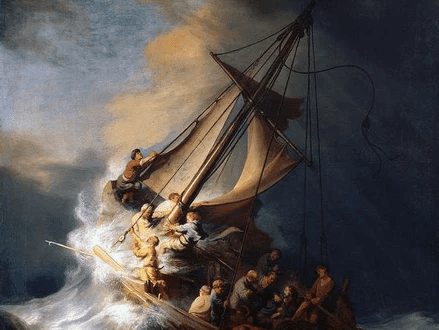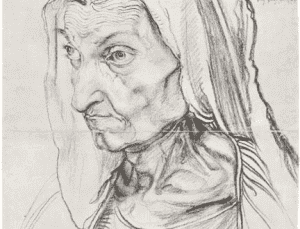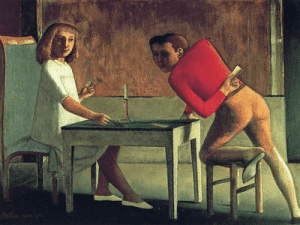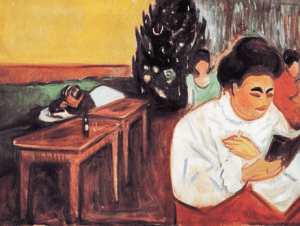Art has always played an important role in human history, but so has art theft. Since artwork became extremely precious, art heists have been prevalent all over the world.
Millions of dollars’ worth of art has been stolen over the years, and the burglars devised a number of cunning schemes to do it. Some employed violence, while others employed diversions such as fireworks, alarms, and worldwide disasters. Over 100 pieces of iconic art were replaced by one man’s own paintings and doodles. Another went out of a museum with the most famous painting in history crammed into his coat pocket.
Keep reading below to read all about these incredible art heists.
1. Two Crooks Posing as Police, Stole $500 Million Worth of Art

Two guys pretended to be police officers in order to steal 13 works of art valued $500 million in the spring of 1990. They turned up in phoney uniforms and wax moustaches at the Isabella Stewart Gardner Museum in Boston, Massachusetts, stating they had gotten a report about a disturbance.
The thieves tied up the security guards and carried out the scam in under an hour after obtaining in using phoney IDs. They took works by Rembrandt, Vermeer, Manet, and Flinck, among other well-known artists. These priceless masterpieces (including the only Rembrandt Seascape) have never been found, and the FBI continues to offer a $5 million reward for information leading to their discovery.
Netflix just did a documentary about this art heist called ‘This Is a Robbery: The World’s Biggest Art Heist’ I would suggest watching it if you have an interest, click here to see it.
2. ‘Two Laughing Boys With a Mug of Beer,’ by Frans Hals, was stolen three times.

The 17th-century painting “Two Laughing Boys with a Mug of Beer,” by Dutch artist Frans Hals, valued around $18 million, was stolen three times from the Hofje van Aerden museum in Leerdam, Netherlands: in 1988, 2011, and 2020.
After the first two events, the artwork was retrieved. Despite the increased security measures put in place following theft No. 2, criminals broke in through a door early the next morning on August 26, 2020. Despite setting off alarms, the criminals were able to flee.
Arthur Brand, an art detective, told the BBC, “Small museums are difficult to obtain because they are too expensive. They’ll get in if they want your belongings.”
Authorities in the Netherlands reported in April 2021 that they had apprehended an unidentified suspect in the 2020 incident. The 58-year-old man, detained at his home in Baarn, is also accused of removing a Van Gogh artwork from the Singer Laren Museum in 2020. The artworks were never discovered.
3. A Van Gogh painting was stolen from a Dutch museum that had been closed due to the outbreak of the Coronavirus.

As the coronavirus spread over the world in late March 2020, museums were deserted, offering the ideal chance for an unknown thief (or criminals) to invade The Singer Laren, a museum in the Netherlands, and steal Van Gogh’s “The Parsonage Garden at Nuenen in Spring 1884.”
The painting’s value was not immediately revealed by The Associated Press, although it is considered to be worth millions, according to The Associated Press. Jan Rudolph de Lorm, the museum’s director, stated in a statement:
“It is very bad for the Groninger Museum [which loaned the painting to the Singer], it is very bad for the Singer, but it is terrible for us all because art exists to be seen and shared by us, the community, to enjoy to draw inspiration from and to draw comfort from, especially in these difficult times.”
The burglar (or criminals) “smashed a glass door to get into the museum,” according to investigators, triggering an alarm that alerted police authorities. However, by the time they arrived, the perpetrator (or perpetrators) had vanished.
Authorities in the Netherlands reported in April 2021 that they had apprehended an unidentified suspect in the 2020 incident. The 58-year-old man was apprehended at his house in Baarn and is suspected of stealing a painting by Frans Hals from the Hofje van Aerden museum in the Netherlands in 2020. The artworks were never discovered.
4. A Librarian Replaced 125 Paintings With His Own

A chief librarian at the Guangzhou Academy of Fine Arts progressively replaced 125 paintings with his own works of art over the period of two years, from 2004 to 2006. The artworks were sold for a total of $6 million by Xiao Yuan at several auctions. He still had another $11 million worth of stolen paintings in his possession when he was apprehended.
While admitting, Xiao defended himself by arguing that fraudulent larceny was rampant in the art world. He also claimed that unknown artists had copied his fakes and replaced them with their own.
5. The Mona Lisa was hidden in the coat of a museum worker.

In 1911, the famed “Mona Lisa” was stolen from the Louvre, the world’s biggest museum. The offender was ultimately discovered after a two-year search. He made touch with an Italian art dealer, who aided the French authorities by arranging a phoney encounter. Vincenzo Peruggia, a former Louvre employee, was identified as the man.
Peruggia stated that he took the artwork on the spur of the moment, and that he only did so because the guard was out of the room. He just took the painting out of its frame and tucked it into his coat pocket before exiting the gallery.
Believe it or not, the Mona Lisa was nowhere near as famous as it is today, and this art theft was actually what started it on its road to fame.
Why Is Mona Lisa Painting So Famous?
6. A Theif Actually Threatened To Sue The Museum For ‘Making It Too Easy’

In 2012, seven artworks were stolen from the Kunsthal Museum in Rotterdam, Netherlands. Famous painters such as Monet, de Haan, and Gauguin painted some of the works. In only three minutes, the burglars were able to disable the security system and accomplish the theft.
What’s even more ridiculous, is that one of the perpetrators, Radu Dogaru, has vowed to sue the museum for facilitating the crime.
7. A Van Gogh painting worth $50 million was stolen twice.

Vincent Van Gogh’s “Poppy Flowers” was stolen from the Mohamed Mahmoud Khalil Institution in Cairo, Egypt, in 2010, 33 years after it was stolen from the same museum.
Only seven of the regular 24 security officers were on duty that day, which gave the criminals a huge advantage. Two Italian suspects were seized and questioned at the time; they were carrying a little canvas. They were, however, finally released.
The picture has never been recovered, and Naguib Sawiris, a millionaire, is offering a $175,000 prize for information leading to its discovery.
8. A European man stole 240 works of art before writing a book on it.

Stéphane Breitwieser is possibly the most well-known modern art thief in the world. He removed 240 works of art from the gallery, including paintings, sketches, chandeliers, vases, watches, and diamonds. After a few years in prison, he decided to publish Confessions Of An Art Thief, a biography about his exploits.
Breitwieser began pilfering paintings again after his parole until he was apprehended in 2011. His mother was also arrested as an accomplice this time since she was aware of his actions and had even hidden some of his artwork in her house.
9. Fireworks and smoke were used by a British thief to steal a $5 million painting.

On the night of December 31, 1999, as everyone else was enjoying the start of the new century, a British thief snatched an artwork valued at approximately $5 million. The event occurred in Oxford, England, in the Ashmolean Museum.
While the whole city was distracted by loud pyrotechnics, the perpetrator broke inside the museum. He used a rope ladder to descend through a hole in the museum’s roof. He produced smoke to conceal himself from the cameras once inside. This Paul Cezanne artwork has never been found.
10. Arundel Castle was robbed of rosary beads belonging to Mary, Queen of Scots.

During a raid on Arundel Castle in West Sussex, England, on May 21, 2021, the gold rosary beads that Mary, Queen of Scots most likely carried with her to her beheading in 1587 were seized, along with other treasures valued more than $1.4 million. Thieves broke in via a window at night, setting off an alarm, and damaged a glass display cabinet containing the beads and other things, according to a police complaint.
The Duke of Norfolk (of the Howard dynasty) owns Arundel Castle, which was built approximately 1068 by Roger de Montgomery, Earl of Arundel; the mediaeval castle houses numerous important relics.
Many of the other items seized, according to authorities, were of great monetary worth. Meanwhile, the rosary “is of little intrinsic value as metal, but as [a] piece of the Howard family history and the nation’s heritage it is irreplaceable.”
Following Mary’s execution, according to British historian Kate Williams, “People were afraid she would become a Catholic martyr, so practically everything she had was confiscated and burnt. So we had one small Mary Queen of Scots monument, which has already vanished.”
Information Citations
En.wikipedia.org, https://en.wikipedia.org/.
Recommend0 recommendationsPublished in Art History, Resources







Responses